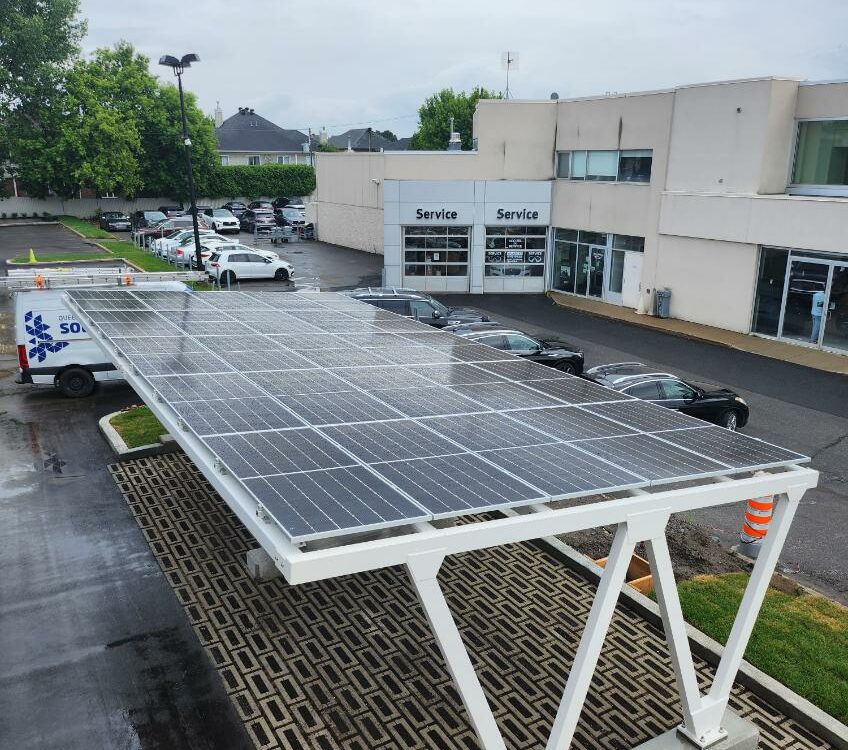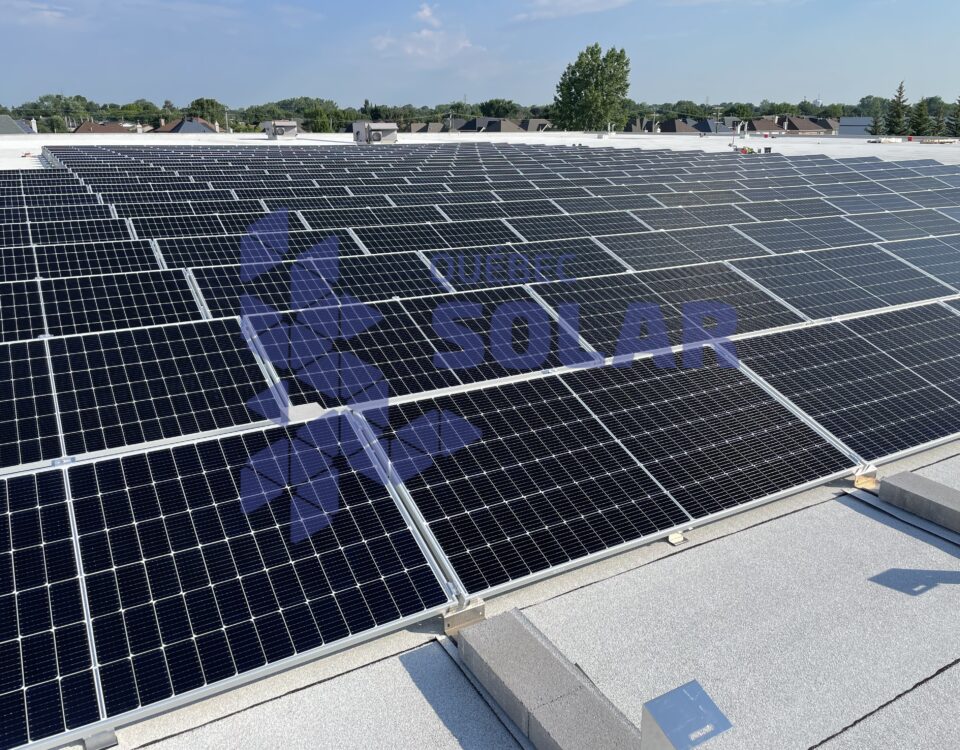How can solar energy help farmers?

Solar energy is the fastest growing renewable energy source
June 15, 2020
How are solar panels made?
June 29, 2020
Installing solar panels on a Quebec farm is the next step in the evolution of sustainability. We already harvest and eat locally grown food, so it makes sense that our next step is to produce our own electricity where we need it, or on the farms that feed us. Being eligible for attractive tax incentives, Canadian farms have several good reasons to choose solar energy.
This article will cover the following points:
- What are the advantages of opting for solar energy for farmers?
- What are the financial incentives offered to farmers?
What are the advantages of opting for solar energy for farmers?
1. Investing in solar energy systems will give you the opportunity to reduce your operating costs since your solar energy system will produce a percentage of your electricity consumption and thus reduce your future electricity bills. The more powerful your solar energy system, the greater the amount of energy produced and the greater your energy savings. The return on investment will be further shortened due to greater savings.
2. Explained by the greater duration of sunshine, solar panels work best in spring, summer and autumn, when many energy-intensive agricultural activities take place. This means that you generate the most energy when you need it most, which couldn’t be better. In addition, in most cases, summer overproduction is even able to offset your winter costs.
3. In many farms, solar energy is much cheaper than fossil fuels. This is since the state offers compelling financial incentives and that solar energy has a stable cost, regardless of temperature or supply and demand. The following section explains in detail the incentives currently available.
4. A misconception of solar energy is that it is a permanent decision. In most cases, this is simply not true. Being grid-tied, the solar energy systems that we install are directly connected to the Hydro-Quebec grid. This means that the energy produced by your solar panels has two uses; either to be consumed or to be injected into the Hydro-Québec power grid in exchange for credits applicable on your next bill. Nothing prevents you from using solar energy for as long as necessary before returning entirely to Hydro-Quebec electricity.
5. With all the environmental, economic and social consequences it brings, global warming has been a hot topic for years. Knowing that solar panels emit no greenhouse gases when they produce electricity and that their carbon footprint is offset after 3 years of operation (faced with a lifespan of 30 to 40 years), today’s solar panels are a step in the right direction.
6. For vegetable farms, a photovoltaic energy system can easily be transformed into an agrivoltaic solar energy system, a system where crops are planted in the shade of solar panels. This practice dates from the early 1980s and reduces the evaporation rates of irrigation water in summer, as well as the stress level of plants. Knowing that such a system reduces up to 75% of direct sunlight, the environment under the panels is much cooler in summer and requires less water. In addition, knowing that the solar panels work less and less the more the temperature increases, the fact that the plants under the panels cool the underside of the panels increases the productivity of their solar cells. The figure below shows the appearance of an agrivoltaic solar energy system.

7. Ultimately, you will increase your environmental credibility as an eco-responsible farming business. This would demonstrate that your company takes responsibility for its actions by actively fighting to preserve the environment using concrete means. Choosing to be eco-responsible means showing exemplary and promising leadership. This would make you even more attractive to consumers and investors who prefer to join environmentally friendly companies.
What are the financial incentives offered to farmers?
Natural Resources Canada offers tax incentives to Canadian companies owning clean energy related equipment. These incentives are in the form of a capital cost allowance (CCA) for the production of clean energy and are applicable to any commercial solar energy system acquired between February 22, 2005 and January 1, 2025.
CCA is the amount of depreciation costs that the government allows a business to deduct from its receipts for income tax purposes for assets that lose value over time. It is therefore the equivalent of tax credits which extend over several years.
In the case of solar energy systems, these costs include the capital cost of the eligible property for energy conservation and clean energy production as well as all costs associated with the purchase and installation of the property as:
- The purchase price of the property.
- Costs related to the design, technical studies and commissioning of the property.
- The cost of modifications or improvements made to the property after its purchase.
- Legal, accounting or other costs related to the purchase of the property.
- The cost of other services necessary to make the asset operational.
The claimable CCA depends on the date the project is put into operation. Until January 1, 2025, the CCA is 50% while that will be 30% for any project starting after this date. The CCA claim is based on a prescribed rate, which is generally based on the useful life of the asset. In the case of solar energy systems, the lifespan is 30 to 40 years depending on the manufacturer chosen.
That said, it’s important to mention the fact that under the half-year rule, only half of the normal CCA deduction is allowed in the first year.
The table below shows the savings generated for a $ 150,000 solar energy project. The undepreciated capital cost (UCC) is the total cost of the project without depreciation while the CCA is the equivalent of the tax credits offered. The more the years go by, the more the depreciation offered reduces the total cost of the project. For convenience, the values of the UCC and CCA have been rounded down.
| Year | UCC ($) | CCA ($) |
| 1 | 150 000 | 37 500 |
| 2 | 112 500 | 56 250 |
| 3 | 56 250 | 28 125 |
| 4 | 28 125 | 14 062 |
| 5 | 14 062 | 7031 |
| 6 | 7031 | 3515 |
| 7 | 3515 | 1757 |
| 8 | 1757 | 878 |
| 9 | 878 | 439 |
| 10 | 439 | 219 |
| 11 | 219 | 109 |
| 12 | 109 | 54 |
| 13 | 54 | 27 |
| 14 | 27 | 13 |
| 15 | 13 | 6 |
| 16 | 6 | 3 |
| 17 | 3 | 1 |
| 18 | 1 | 0.5 |
| 19 | 0.5 | 0.25 |
| 20 | 0.12 | 0.06 |
| Total | 150 000 |
The table above shows that the CCA offered by the Government of Canada covers 90% of the project costs after 5 years, which is remarkable. Although you have paid all the project costs in the first year, be aware that these will be amortized to a quarter of the life of the project. It is therefore obvious that opting for a solar energy system has never been easier than before.
Conclusion
Ultimately, solar power brings many benefits to farmers, whether by lowering their operating costs, reducing their ecological footprint through better irrigation efficiency, or increasing their environmental credibility. The financial incentives offered are very attractive, although they still require a significant down payment in the first year of the project.
That said, Quebec Solar specializes in developing economic strategies and energy assessments and would be happy to help you grow your business. For more information on the steps to follow, please contact us directly. Our affordable, reliable and turnkey solar energy systems will fully satisfy you. Give us the chance to impress you and share our solar expertise with you.



